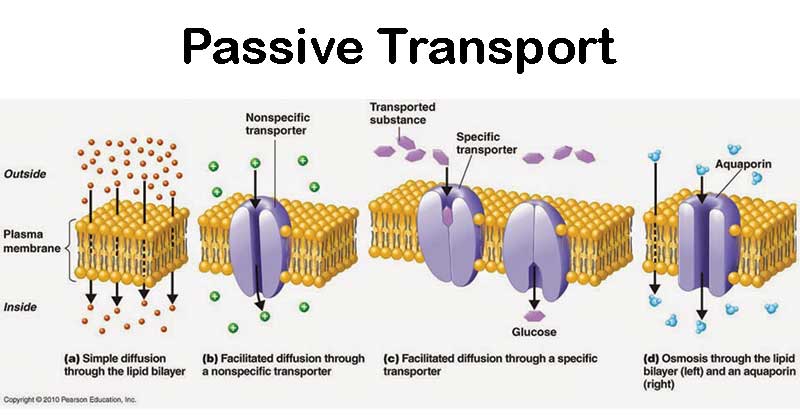The formation of biological membranes is based on the properties of lipids and all cell membranes share a common. Some substances small molecules ions such as carbon dioxide CO2 and oxygen O2 can move across the plasma membrane by diffusion which is a.
Chapter 7 Transport Across Cellular Membranes In Fundamentals Of Cell Biology On Openalg
The movement is a result of a concentration gradient that forms around the plasma membrane.

. The structure and function of cells are critically dependent on membranes which not only separate the interior of the cell from its environment but also define the internal compartments of eukaryotic cells including the nucleus and cytoplasmic organelles. Pediatric Neurology publishes timely peer-reviewed clinical and research articles covering all aspects of the developing nervous systemPediatric Neurology features up-to-the-minute publication of the latest advances in the diagnosis management and treatment of pediatric neurologic disorders. Like all other cellular membranes the plasma membrane consists of both lipids and proteins.
Secondary active transport involves the use of an. The cytoskeleton is a complex dynamic network of interlinking protein filaments present in the cytoplasm of all cells excluding bacteria and archaea. Excitable cells contain ion channels in their plasma membrane that allow for the influx and efflux of ions.
Cell Membrane. The cell membranes four primary functions include cell signaling selective transport excretion of wastes and structural support. If the cell membrane fails to function normally the cell dies.
Nanofiltration NF technology based on thin-film composite TFC membrane plays an important role in tailored ion separation because of its energy-efficient process and capability of selective ion separation based on Donnan exclusion and size sieving conjunct effects The development of high-selective NF membranes is necessary to satisfy the huge. Since the cell membrane is. If the process uses chemical energy such as adenosine triphosphate ATP it is called primary active transport.
Carrier proteins change shape as they. The cell membrane is selectively permeable meaning that each cells membrane allows only certain specific substances to pass through. These membranes allow almost any food or waste substance to pass through.
Exocytosis Exocytosis is a process in which an intracellular vesicle membrane bounded sphere moves to the plasma membrane and fused the substance into the Extra cellular fluids For example a few of the processes that use Exocytosis are. Osmosis is a selective process. The movement of these ions allows for changes in membrane potential or the cells charge.
Proteins embedded within the. The journals editor Yasmin Khakoo MD FAAN in conjunction. Here sodium ions are constantly transported out of the cell into the.
For instance take two flasks and fill one with a mild sugar. Bacterial cell wall is made up of peptidoglycan. It extends from the cell nucleus to the cell membrane and is composed of similar proteins in the various organisms.
Cell membranes are semi-permeable barrier separating the inner cellular environment from the outer cellular environment. Active transport is the movement of a substance across a membrane against its concentration gradient. Figure 810 Some substances are able to move down their concentration gradient across the plasma membrane with the aid of carrier proteins.
This is usually to accumulate high concentrations of molecules that a cell needs such as glucose or amino acids. This is because the water droplets from the condensation of the water vapor and the brine solution from the liquefaction of the deliquescent substance can travel together with the discharge air stream. Cell transport refers to the movement of substances across the cell membrane.
Cell wall In bacteria and plant cells the outermost cell cover present outside the plasma membrane is the cell wall about which we shall study now. Secretion of proteins like enzymes and antibodies from cells. They are used upstream of desiccant and membrane dryers.
In the case of the plasma membrane these compartments are the inside and the outside of the cell. Diffusion Passive Transport 2. The cell membrane or plasma membrane is the structure that keeps cytoplasm from spilling out of a cell.
The movement of substances across the membrane can be either passive occurring without the input of cellular energy or active requiring the cell to expend energy in transporting it. Cell membrane regulates movement of substance into and out of the cell. Typically water is the sole free-flowing molecule across this barrier.
A concentration gradient is the difference in concentration of a substance between two areas. Cell membrane acts as a barrier to most but not all molecules. The fundamental structure of the membrane is the phospholipid bilayer which forms a stable barrier between two aqueous compartments.
It is a thin flexible coating around the cells of all living things. The cell must expend energy that is usually derived from a substance called adenosine triphosphate or ATP see Chapter 4. Cell Membrane and Plasma Membrane.
It is often described as the plasma membrane. A third mechanism for movement across the plasma membrane is facilitated diffusion. In eukaryotes it is composed of three main components microfilaments intermediate filaments and microtubules.
An example of active transport occurs in human nerve cells. Passive transport mechanisms include diffusion osmosis and filtration. Transport across cell membrane is classified into four ways.
This membrane is composed of phospholipids which form a lipid bilayer that separates the contents of a cell from the extracellular fluidThe lipid bilayer is semi-permeable meaning that only certain molecules are able to diffuse across the. Analogously a plasma membranes functions involve movement within the cell and across boundaries in the process of intracellular and intercellular activities. It is a thick jelly-like substance that is enclosed by the cell membrane and contains all the cell organelles except the nucleus.
For refrigerant and deliquescent dryers coalescing dryers are more useful downstream.

Cell Membranes Learn Science At Scitable

Chapter 3 Movement Of Substances Across The Plasma Membrane Diagram Quizlet


0 Comments